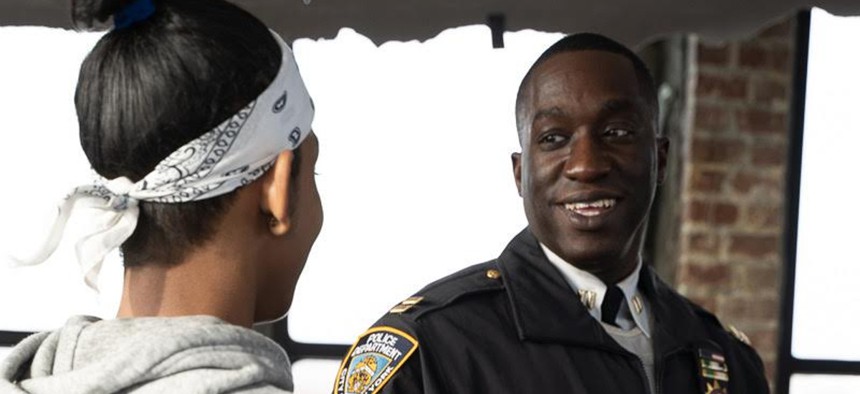Opinion
Opinion: Enforcing the law means engaging today’s youth
The perception that police are an occupying force worsening the struggles in young people’s lives must be reversed.

Derby St. Fort sits on the board of Strategies for Youth (Sue Kwon)
As a law enforcement executive, I've focused on engaging young people, especially those influenced by the aftermath of George Floyd's death and subsequent Black Lives Matter protests. My visits to community organizations serving youth impacted by violence, poverty and numerous challenges revealed a troubling perspective – many of these young individuals view the police as an occupying force, worsening the struggles in their lives. While our officers receive training and tools to address crime and other community issues, a crucial missing element is specific training and policies for their interactions with this generation of young people.
In recent months, the pressing need for well-defined policies has been starkly underscored by a series of high-profile incidents. These include an unarmed 14-year-old shot by a suburban Chicago officer, an 11-year-old shot in the chest by a Mississippi police officer, and videos revealing officers in California and Alabama body slamming teens to the ground. Tragically, such incidents widen the growing divide between today’s youth and law enforcement. And they cost the taxpayer millions.
Fortunately, there's a way to fix the situation we are in.
A diverse group of national, regional, and state experts and stakeholders worked with Strategies for Youth advocates to issue 12 Model Law Enforcement Policies for Interactions with Youth designed to remedy recurring problems in youth policing, including escalation and use of force. These policies are based on research, case law, statutes and U.S. Department of Justice consent decrees. These policies are developmentally appropriate, trauma-informed, and equitable and law enforcement agencies can tailor them to their needs.
In today's complex world, understanding the impact of trauma is vital for law enforcement. Adopting a trauma-informed approach is crucial for enhancing police-youth interactions. Trauma-informed officers comprehend its impact and respond with heightened consideration during such encounters. These policies provide invaluable guidelines for fostering an environment where law enforcement's interactions with young individuals prioritize de-escalation and a commitment to preventing negative perceptions of the police.Alongside the introduction of trauma-informed policing into our daily interactions, advocates are calling for officers to employ alternatives to arrest when appropriate and consistent with public safety – a proposition supported by a resounding 67% of the public in a poll commissioned by
Strategies for Youth. These results emphasize the need for law enforcement agencies to provide such alternatives, especially when dealing with the vast majority of youth they encounter – kids involved in low-level, non-violent offenses. In fact, only 8% of youth arrests in 2020 pertained to violent crimes, according to the Justice Department's data.
Americans' views are even more uniform when it comes to law enforcement in schools. Almost nine out of 10 Americans believe police officers should undergo training before working in schools, with large majorities supporting training in communications, dealing with crisis, protections for youth with disabilities and de-escalation. Nearly half (49%) think law enforcement officers working in schools should focus exclusively on preventing shootings and other acts of serious violence and should not get involved in discipline issues.
The Supreme Court has repeatedly stated that youth are different from adults. Young people are still developing and impulsivity puts them at risk in interactions with law enforcement, especially when officers are not equipped to adjust their practices to account for youth development.
The safety of today's youth is indeed one of the top priorities for law enforcement agencies. Equally imperative is the need to address how we achieve this safety. Moreover, it's crucial that our interactions with young people, especially those who have come of age in tumultuous times, embody understanding and empathy.
As we endeavor to implement specific training and policies that bridge the gap between the police and youth, our ultimate goal is to establish a safer environment where kids can flourish without bearing the weight of unfair biases. By taking this pivotal step of integrating these policies, we can redefine policing, rebuild trust, and secure a brighter future for this generation of young people.
Derby St. Fort sits on the board of Strategies for Youth, a nonprofit training and policy organization that works to ensure the best outcomes for youth interactions with law enforcement.
NEXT STORY: Opinion: The crisis in New York’s child welfare system must be addressed
